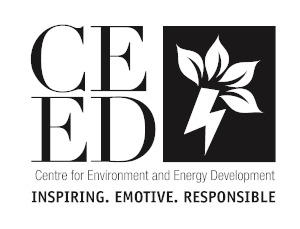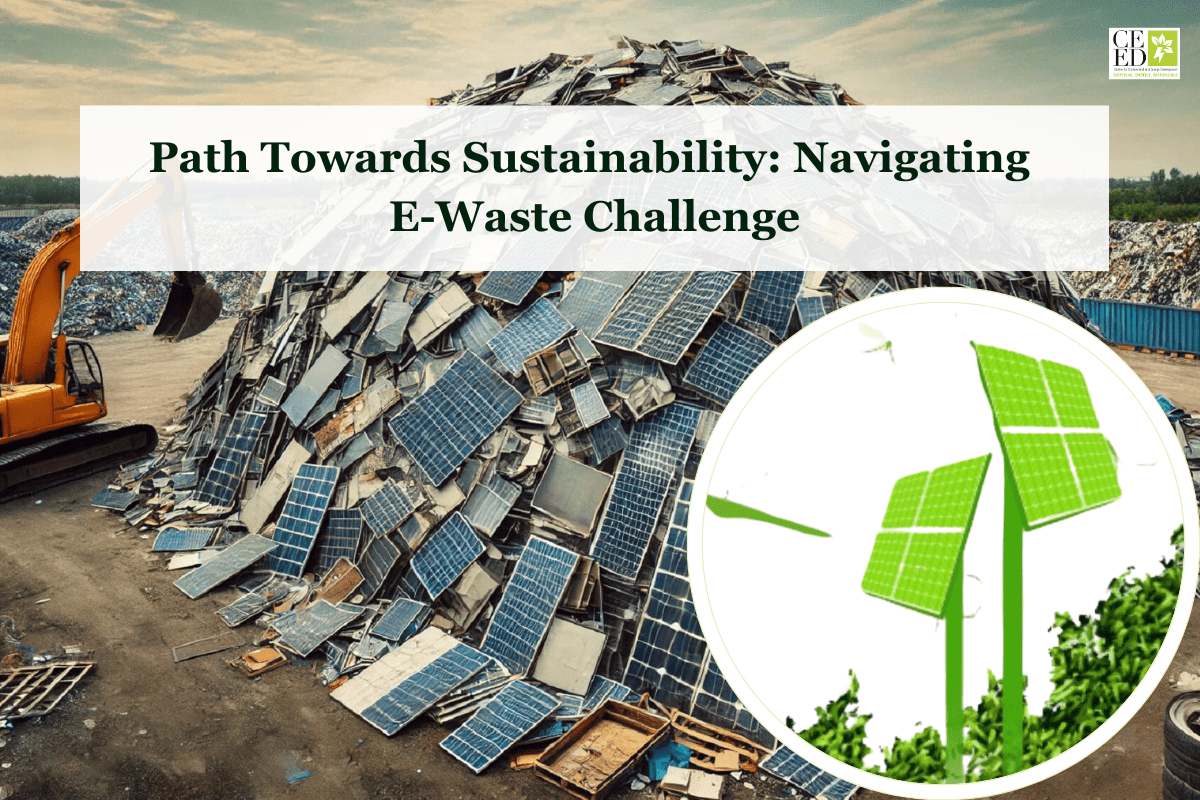Niva Mishra |
E-waste, which includes discarded electronic devices such as computers, smartphones, and solar panels, is one of the fastest-growing waste streams in the world. According to UN the Global E-waste Monitor 2024 reveals that the generation of electronic waste worldwide is increasing at a rate five times greater than the documented recycling efforts. In 2022, a staggering 62 million tonnes of e-waste were produced, marking an 82% increase since 2010, and this figure is projected to rise to 82 million tonnes by 2030.
Let’s know why Solar Energy is being a Double-Edged Sword in the E-Waste Crisis:
- India is shifting to renewable resource to decrease the dependency on fossil fuel and achieve the target of net zero.
- Projected Waste Increase: India’s solar waste is expected to rise from 100,000 tonnes currently to 600,000 tonnes by 2030, and over 19 million by 2050 primarily due to new solar power capacity deployment.
- Cumulative Waste Forecast: By 2050, cumulative solar waste from existing and new installations is projected to reach about 19 million tonnes, with 77% of this waste stemming from newly deployed solar capacity.
- State Contributions: Approximately 67% of the anticipated waste is originating from five states: Rajasthan, Gujarat, Karnataka, Andhra Pradesh, and Tamil Nadu.
- Significant Capacity Growth: India’s solar capacity is predicted to increase from 66.7 GW in 2023 to 292 GW by 2030, making effective solar PV waste management essential for environmental sustainability and economic growth.
- Circular Economy Opportunity: The report emphasizes that the growing solar waste presents an opportunity for India to establish itself as a leading hub for a circular economy in the solar industry, enhancing resilient supply chains for solar power equipment.

Source: Projected data from 2024 to 2034
The Rise of Battery waste solar panel:
A significant concern is rising for the future with the increasing volume of solar panels and batteries entering the e-waste stream. As countries shift towards renewable energy sources, the disposal of solar panels which typically have a lifespan of 25-30 years, is being a pressing issue. India has incorporated solar waste management into its E-Waste Management Rules, requiring manufacturers to recover useful materials from solar waste and adhere to guidelines set by the Central Pollution Control Board (CPCB). This regulatory framework aims to promote recycling and responsible disposal of both solar panels and batteries.
- Lithium-Ion Batteries:
- These batteries are preferred due to their higher energy density, longer lifespan (up to several thousand cycles), and greater efficiency (around 95% round-trip efficiency). They can store energy generated during the day and release it when needed, making them ideal for solar power systems.
- Lead-Acid Batteries:
- This traditional option includes both flooded and sealed types. While they are lower in cost, they have a shorter lifespan (200-1000 cycles) and lower efficiency compared to lithium-ion batteries. Lead-acid batteries are still widely used due to their availability and lower initial investment.
Country is facing a significant challenge with battery waste, generating approximately 150,000 tonnes annually, primarily from lead-acid and lithium-ion batteries used in electric vehicles and renewable energy systems. The newly implemented Battery Waste Management Rules, 2022, is emphasizing Extended Producer Responsibility (EPR), requiring producers to ensure proper collection and recycling.
E waste Exposure:
E-waste is exposed to the environment through various hazardous practices, including scavenging, dumping in landfills or water bodies, and open burning, which release toxic substances into air, soil, and water. Informal recycling methods such as acid leaching and manual disassembly further exacerbate pollution, as they often lack safety measures, leading to significant health risks for workers and surrounding communities. These unsound practices contribute to widespread contamination from heavy metals and other hazardous chemicals, posing serious environmental and public health challenges.
Solar and battery waste comprises various materials, each contributing to its overall composition. In solar waste, approximately 75% is glass, followed by 10% silicon, of the total weight of panel, which is primarily sourced from crystalline silicon panels. Valuable components include 12 to 18 tonnes of silver and around 16 tonnes of cadmium and tellurium, mainly found in cadmium telluride (CdTe) panels from the projected data. A significant amount of aluminum and copper are present from the frames and wiring. In battery waste, common materials include lead, which constitutes a large portion of lead-acid batteries, while lithium is increasingly found in lithium-ion batteries. Nickel and cobalt are also prevalent in various rechargeable batteries, contributing further to the waste composition.

To effectively manage e-waste, especially solar waste in India, it is essential to establish a comprehensive regulatory framework that promotes public-private partnerships, enhances recycling capabilities, and encourages eco-friendly design practices among manufacturers.

Fig: A circular approach for E-waste Management
Addressing the e-waste crisis effectively can be done, adopting the principles of a circular approach. This approach emphasizes designing products for longevity, repairability, and recyclability.

As we commemorate International E-Waste Day, it is a need to recognize the urgency for effective e-waste management strategies not only globally and in India but state wise, district wise and city wise. ILO and WHO estimate that millions of women and child labourers working in the informal recycling sector globally and are at risk of hazardous e-waste exposures. Approving circular economy principles and enhancing recycling infrastructure, are the must step to be taken to mitigate environmental harm while recovering valuable resources from electronic waste. The future health of our planet depends on our ability to manage e-waste sustainably—turning a problem into an opportunity for innovation and responsibility.
References:
https://www.sciencedirect.com/science/article/abs/pii/S2352550920303274
https://meity.gov.in/writereaddata/files/Circular_Economy_EEE-MeitY-May2021-ver7.pdf
https://ecircular.com/circular-economy-in-electronics-role-e-waste-recycling/
https://www.astuteanalytica.com/industry-report/india-e-waste-management-market


